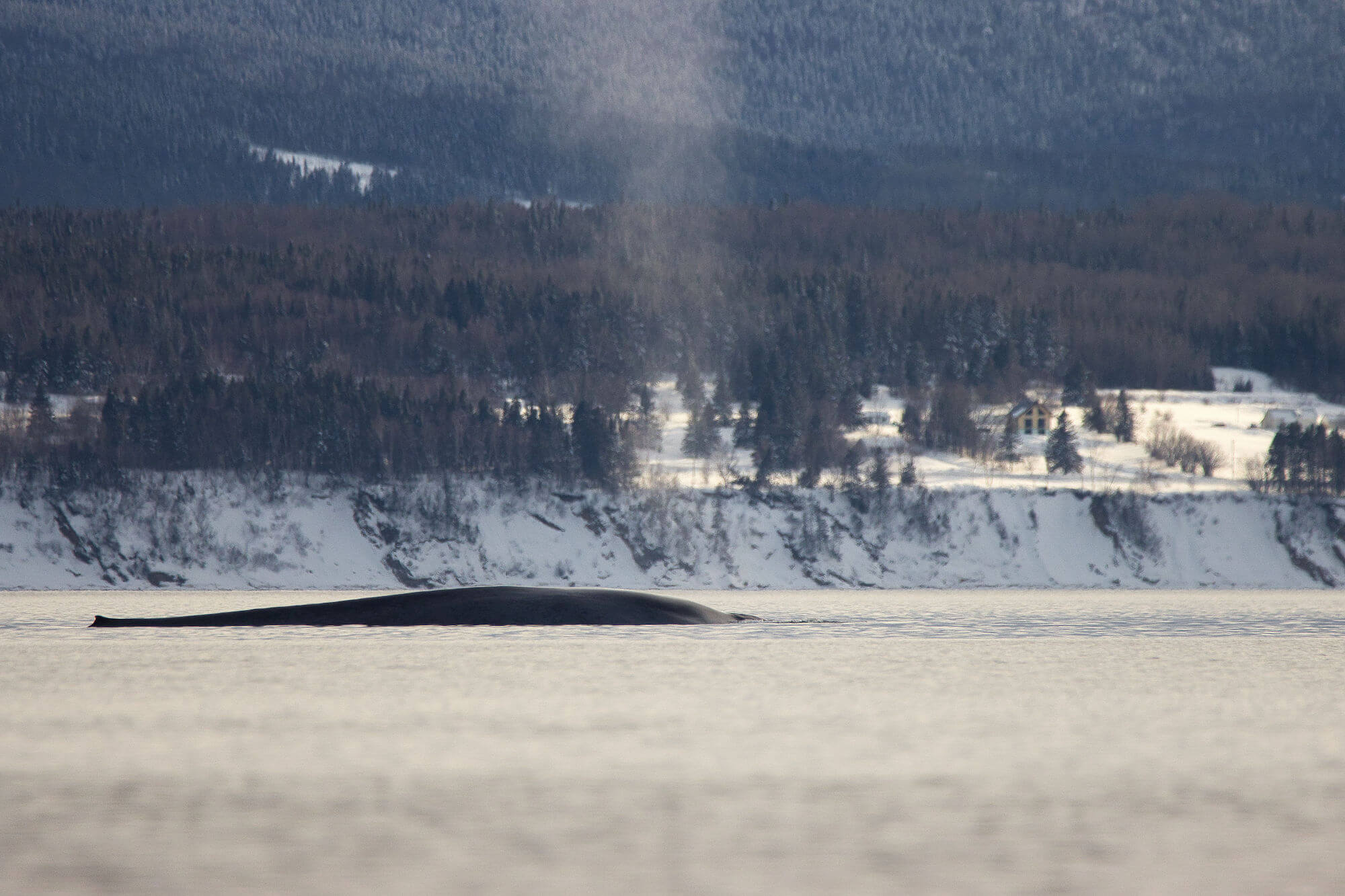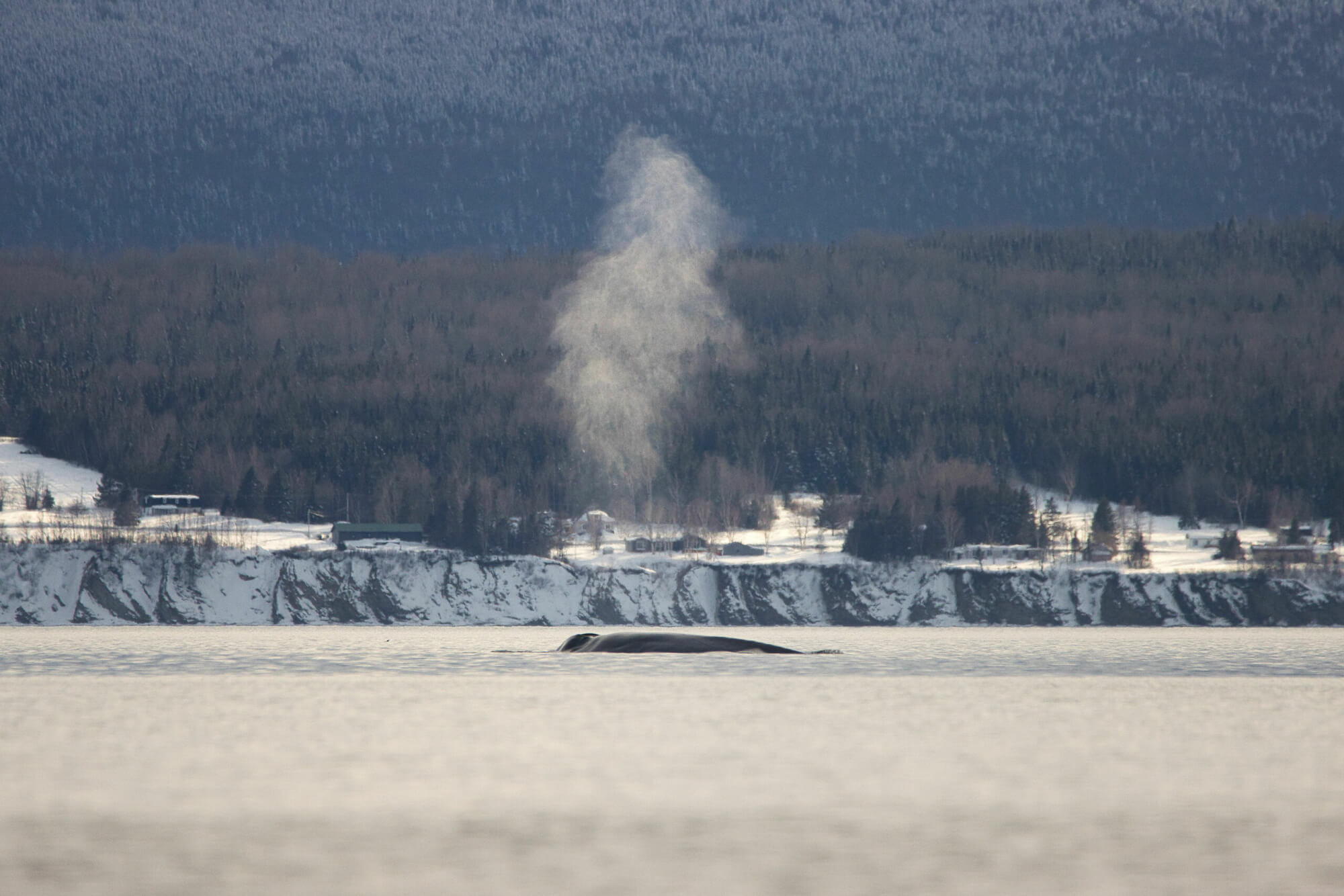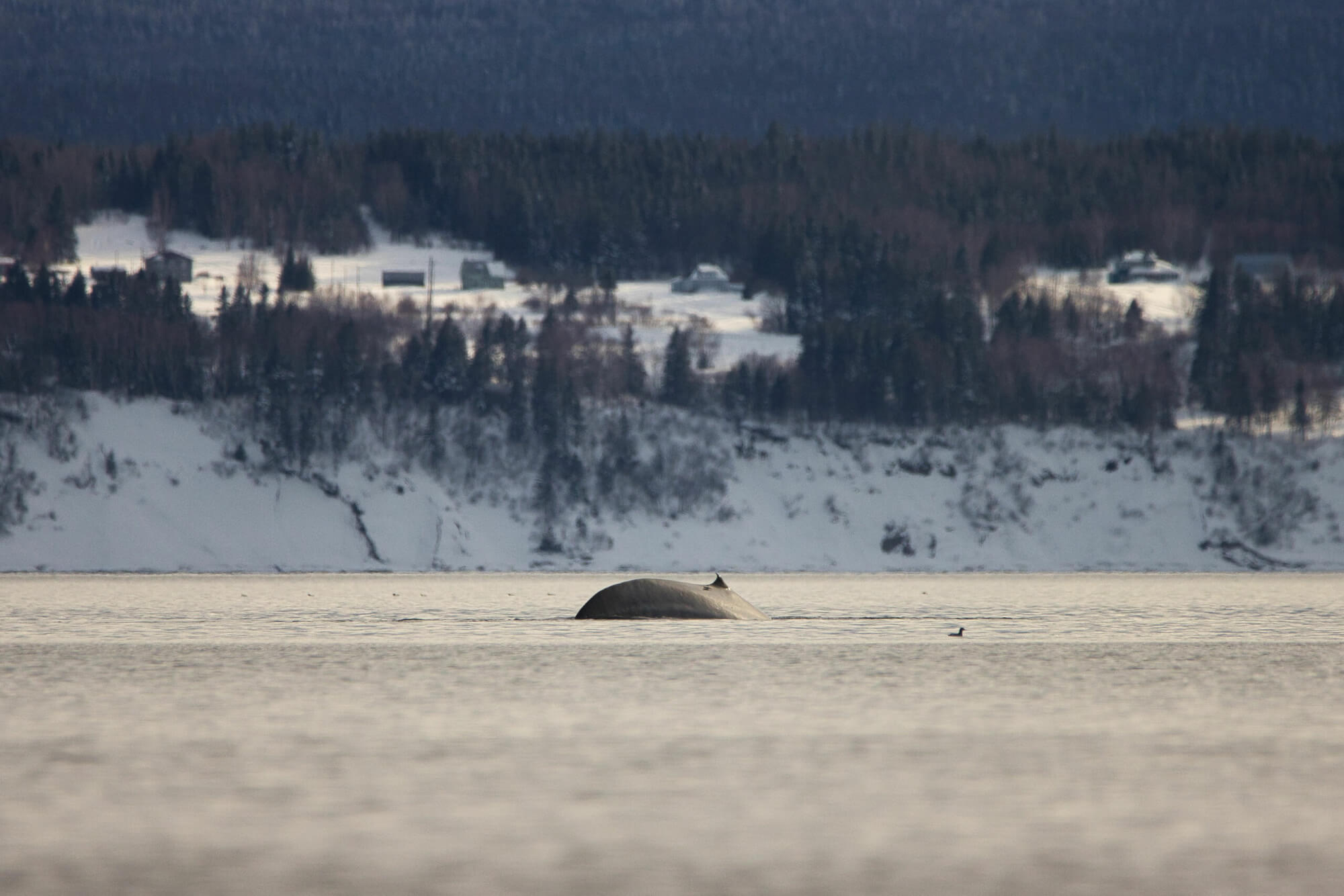The mysterious series of spout sightings that began last week continues, only this time we might actually be able to identify some of their owners! This last week of March has also been marked by the presence of occasionally overly nomadic seals, the discreet return of the first minke whales and increasingly present belugas in the estuary.
Five blues and one fin
It’s Monday morning, March 27, when the show gets underway on the north shore of the St. Lawrence, in the town of Godbout. Erupting into the air is a massive spout that most certainly belongs either to a large fin whale or a blue whale. Two days later, on March 29, blasts resonate a little farther east, near Sept-Îles. In the morning, three blue whales roamed offshore, about 7 nautical miles from the coast, according to Jacques Gélineau, mariner and avid marine mammal observer. In the afternoon, Jacques tallied five blue whales and one fin whale… Quite impressive! About twenty harp seals have also been present in the area, not to mention the two minke whales he observed, one near Sept-Îles and the other in the Mingan Archipelago.
On the other side of the St. Lawrence, a Gaspé resident and amateur wildlife photographer also had the chance to encounter several whales during a snowshoe hike in Grande-Grave in Forillon National Park. Thanks to his trusty camera, he was able to capture some very useful images for ID purposes. Indeed, he shared his pictures with the Group for Research and Education on Marine Mammals (GREMM) in order to confirm the species. After verification, it appears that the animal in question was a blue whale, the largest creature on the planet. In Petite-Rivière-au-Renard, two harbour seals have been quietly lazing on the rocks in recent days.
Adventurous belugas and seals
On the northern shores of the St. Lawrence, harbour seals forage for fish while Iceland and glaucous gulls stream past Cap de Bon-Désir in Les Bergeronnes. Pods of belugas have been seen swimming along the coast, and were observed for the first time from Longue-Rive and from Tadoussac, at the entrance to the Saguenay Fjord. One experienced observer is treated to a pleasant surprise when she spots her first beluga of the year off Pointe de l’Islet while a seal pup swims close by. Two harbour seals were also quietly drifting on the ice a few days earlier.
In Pointe-aux-Outardes, on March 27, a number of residents were astonished to discover a harp seal. Indeed, the animal had travelled quite a distance (nearly 1 km) inland and even crossed a road before reaching a wooded area in Pointe-aux-Outardes Nature Park. An impressive encounter, as these pinnipeds can weigh up to 150 kg and measure 1.6 m long. However, even if they spend most of their time in the water, seals can still get around quite well on land.
.
In Gallix, a little “whitecoat” found refuge between two houses. Perhaps its mother had left to feed, or maybe the young seal was already weaned, though it’s impossible to say for sure. Typically, after nursing her offspring for 12 days, the mother will leave and the youngster is forced to fend for itself for four to six weeks before it is ready to take its first swim. What were these two individuals doing so close to human dwellings? More and more, the decline in ice cover in the St. Lawrence triggered by climate change is causing seals to venture onto shore.
If the seal has visible injuries, if it is in an inconvenient place for human activities or if you see other people disturbing or handling it, contact the Quebec Marine Mammal Emergency Response Network at 1-877-722-5346. Specialists will determine the most appropriate course of action.
Share your observations!
Have you seen any marine mammals in the St. Lawrence? Whether it’s a spout offshore or just a couple of seals, drop us a line and send your photos to [email protected]!










